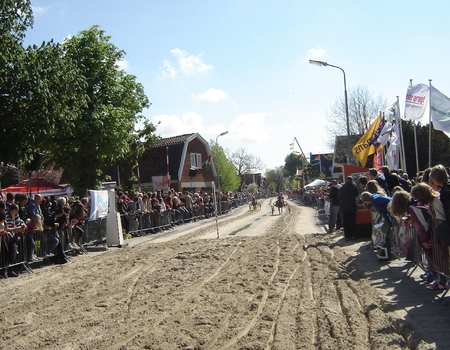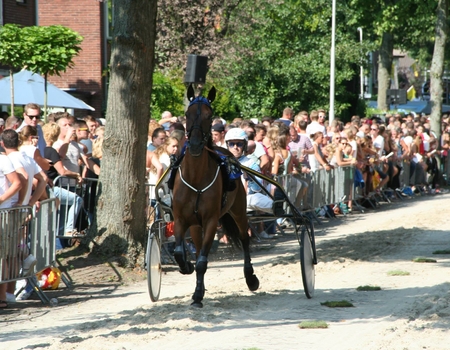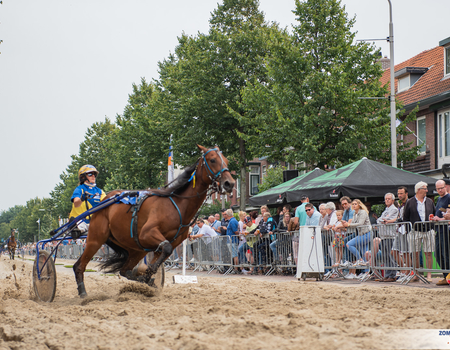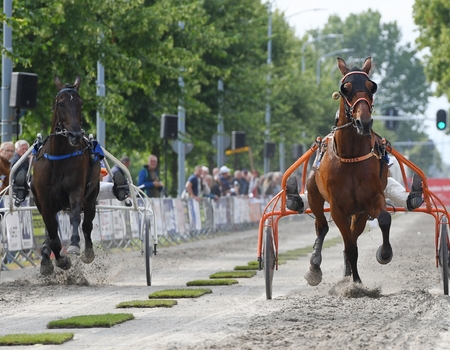Short track
A short track harness race is a match in which horses, which pull a light cart (sulky), trot as fast as they can. In the sulky sits the driver. The horses trot in pairs, alternately in the left and right lane, against each other over a straight track of about 300 metres. The horse that wins two races first, goes on to the next round. Before the start of each round, the public bets on which horse will win.
The development of the short track harness races
In the Netherlands, it was mainly the fairs that stimulated the harness races. Innkeepers, rich merchants, and people of nobility wrote contests in which the horses always trotted two by two against each other. In 1554, a silver whip was already being competed for at the famous annual fair in Valkenburg (South-Holland). These matches were the beginning of the short track harness races.
"I bet that my horse is faster than yours." This is also how betting on horses came into being, which is linked to trotting. When a horse proved successful, the owner took part in trotting races more often or even "full time". This is how a farmer's horse turned into a race trotter.
The short track harness races have developed further. There have been important technical improvements, but the white and red flag for the judges, dating back to the 17th century, are still in use.
Nowadays, a short-track harness race is usually the final event of a week of festivities. Thousands of people surround the track and enjoy the exciting battle between the two horses that compete in each race. The village lives up to the spectacular conclusion that gives the visitors the feeling of experiencing an old tradition.
Practitioners
The short courses that still exist are united in the Bond van Harddraverijverenigingen en stichtingen (sinds 1931) (League of Harness Racing Associations and Foundations (since 1931). The boards of the short-track associations organise the races. The oldest existing short track – Santpoort – dates from 1759. Other practitioners and people involved are the drivers, trainers, breeders, owners of fast trotters and horse lovers.
Locations
In 1894, in the west and north of the country, a total of 209 short-track harness races were held. It was mainly the wealthy farmers, merchants, rich peasants, and manufacturers, who could afford to keep a fast trotter. At present, the short track is very popular in a wide strip along the North Sea coast.





